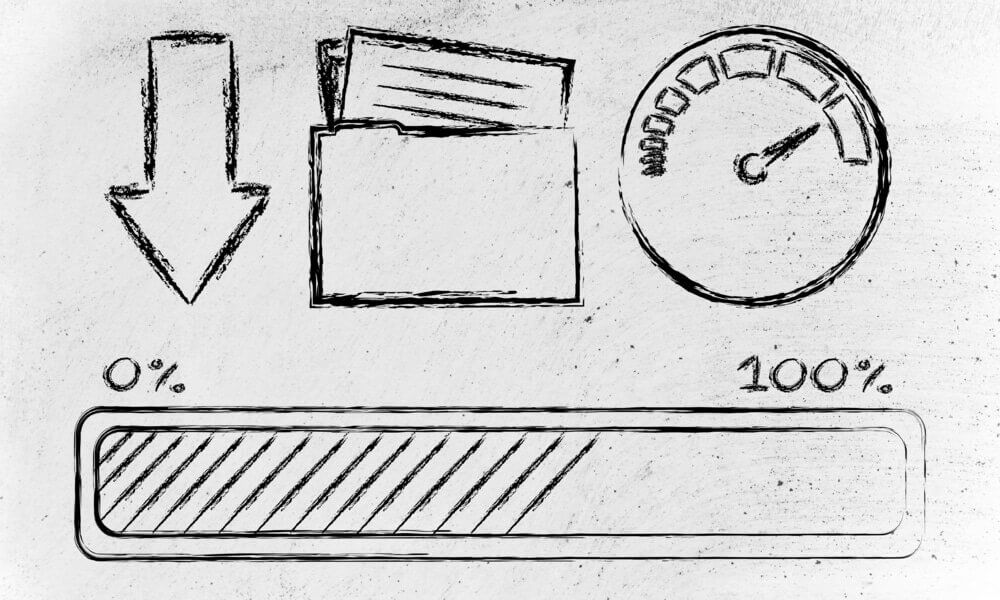
Why your website needs to be fast.
If you’ve ever looked into the correlation between website load time and site abandonment, you know there’s a clear urgency to increasing the performance of your website. You’ve probably heard that “every second counts,” but the truth is much more like every millisecond counts. A 3-second load time is the bare minimum for an effective website. But to be truly on top of your game, you should aim for much closer to half a second (500 milliseconds). For reference, it only takes you 300–400 milliseconds to blink.
This difference in load time has a direct impact on bounce rate and conversions. So if you’re trying to improve your site performance, website load time should be your top priority. It doesn’t matter how clear your design or how useful your information is if your visitors leave before it has time to load.
So, as you set out to improve your site performance, where should you start?
Google PageSpeed Insights are not enough.
Because we rely on Google for so many things, many of us head instinctively to Google PageSpeed to find out how our websites are performing along this all-important metric. Unfortunately, this is one area where the insights provided may be misleading. Google PageSpeed Insights will give you a lot of tips on how to improve your website load time, but (surprisingly!) it doesn’t factor your actual load time into your overall grade.
Instead, it looks at how you’ve built your site, looking for symptoms that might lead to a slowdown. Are your image files too big? Is your HTML structure poor? This symptomatic approach can tell you some things, but it doesn’t actually tell you if you have a problem with your site. It’s like looking at someone and saying “well, you have a runny nose and sore muscles, that could indicate you have a cold.” Yes… or it could indicate that you just came in from a brisk walk on a cold day. The only important question here is: “how do you feel?”
Similarly, while there might by some things on your site that could impact load time (and which you can and probably should improve), the only thing you really need to care about at the end of the day is: “how fast is my site?” If your website is in that half-second range, your PageSpeed score is irrelevant.
What should you do to make your website load time faster?
Google PageSpeed Insights can give you some advice on how to make your site faster, but if you focus too much on their grade you’re likely to miss the overall goal. Instead, as you focus on making your website faster, here are a few things to pay attention to.
- Choose your hosting with care. This is a key area where you get what you pay for. If you don’t have a lot of web traffic, you may be able to get away with a shared server. But upgrading your hosting can give your site speed a real boost if you’re noticing a lag.
- Use a caching plugin. This can do wonders for you load times, and is easy to implement. There are several excellent WP caching plugins available, so find one that works for you and get it running.
- Optimize your image sizes. How big are your image file sizes? It’s easy to not pay attention and load them up to your site without shrinking them down. Your image files should be measured in KBs, not MBs. You shouldn’t need a lot of large, high-res files on your web design. You should be able to shrink the files down substantially without compromising the quality of your site.
- Make use of asynchronous loading. This is a great way to improve your website load time, but unfortunately it’s not something Google PageSpeed Insights considers. Asynchronous loading allows for the most important elements of your website to load first, giving your visitors the impression of a fully-functional site, while allowing slower elements, like widgets, to load a couple seconds later.
At the end of the day, your website load time is the only thing that will matter for your user experience and SEO. Pingdom is a great tool to measure this, and can give you more tips for improving your site performance.
Remember that load speed is part of UX.
You should keep user experience at the center of your site design. That means a site path that makes sense, clear and accessible navigation, and your website loads seamlessly and with minimal delay. If the difference of a couple seconds doesn’t seem important to you, remember that your visitors’ time and attention are valuable.
Most of us are busy and on the move, and your website is but one browser tab out of many. When your visitors leave your site, it’s not necessarily because they’re impatient—3 seconds is just more than enough time for them to remember that email they have to answer, or the article they left unfinished. It’s the amount of time it takes for us to switch from one train of thought to another, from your website to someone else’s.
Keep your visitor’s attention by ensuring your content loads fast enough to retain their train of thought. Blink, and they’ll be gone.





